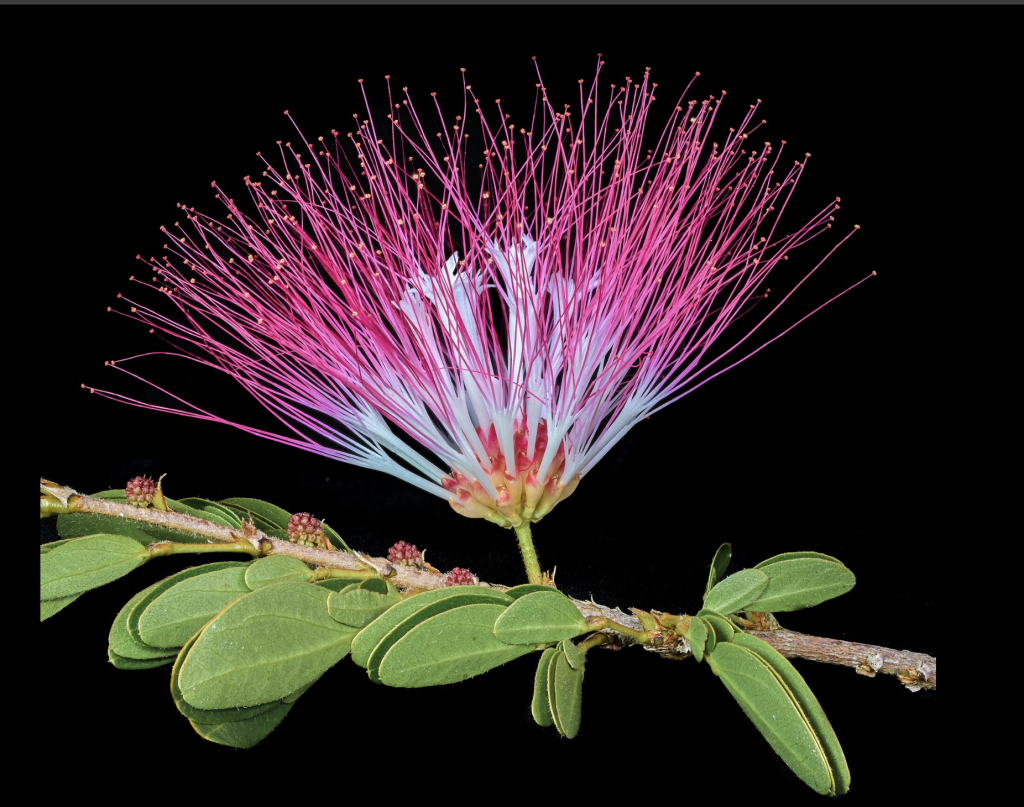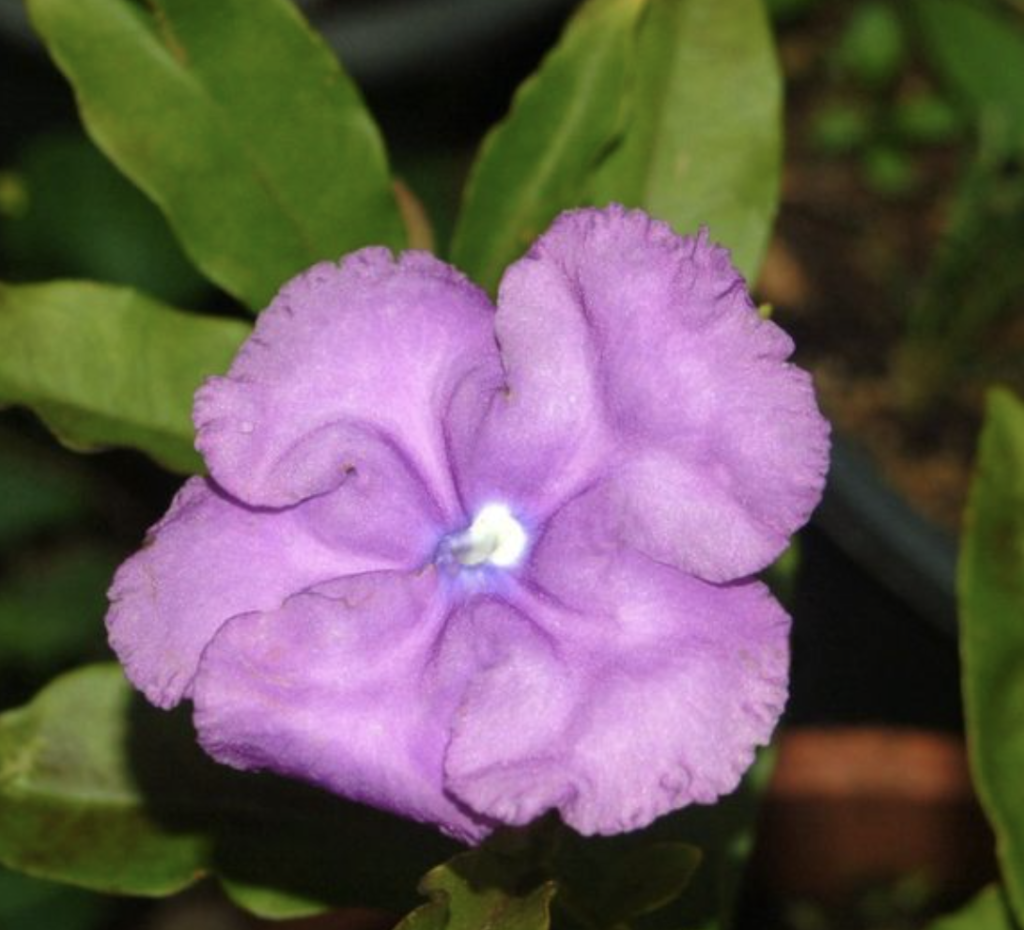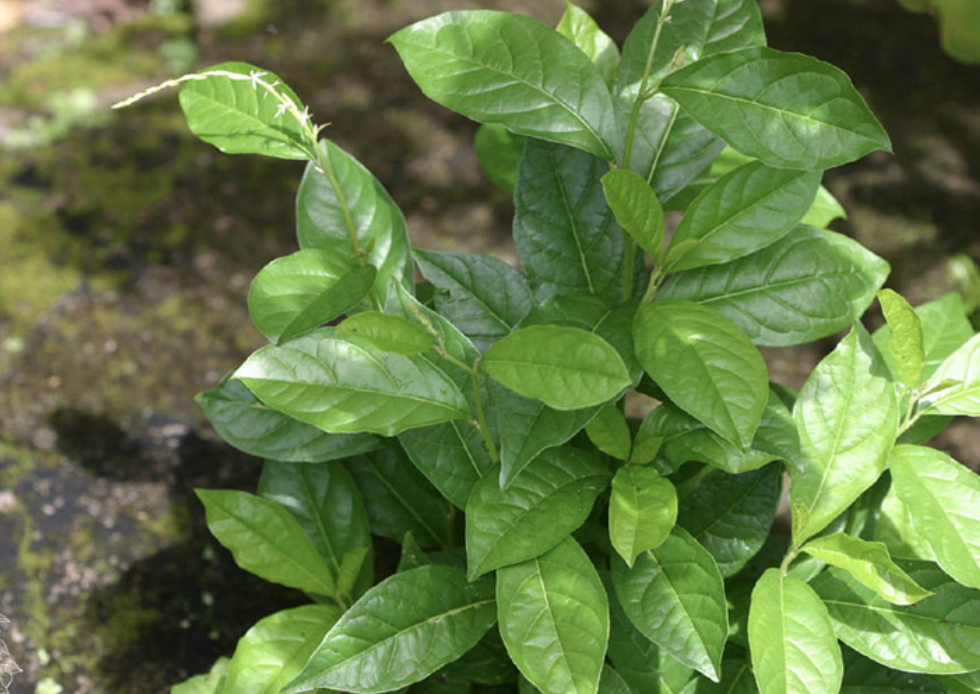
All plants have different characters, strengths, and healing properties (aka superpowers). Some plants, however, have the distinction of being called “Master Plant Teacher” due to the depth of their teachings and the power or knowledge that they choose to teach mankind.
Just a few examples of sacred master plants are:
Mapacho (jungle tobacco), Ayahuasca, Coca, Huachuma, Ajo Sacha, Bobinsana, Chiric Sananga, Rose, Lavender, Dandelion, Passionflower, Remo Caspi, and many more.
For those who are on the path to either becoming a shamanic practitioner or who are deeply committed to working with plant consciousness in order to expand their own, master plant dietas are a central part of their path. It takes discipline, dedication, and a willingness to work with our shadow to navigate the wonders of these dietas.
Bobinsana (Calliandra angustifolia)
Bobinsana, scientifically known as Calliandra angustifolia, is a plant native to the Amazon Basin and is often used in shamanic dietas. These dietas are a form of spiritual, emotional, and physical healing and involve consuming small amounts of the plant regularly over a period of time, ranging from days to months. The process is deeply connected to Amazonian shamanic traditions and is seen as a way to form a bond with the spirit of the plant.
Participants in a Bobinsana dieta often report experiences of emotional healing, particularly relating to heartbreak, grief, and loss. The plant is said to aid in opening the heart and fostering feelings of love and connection. It’s also known for inducing vivid, lucid dreams that can offer insights and aid in the healing process. Physically, Bobinsana has been traditionally used to treat arthritis, blood circulation issues, and urinary and lung problems.
The dieta typically involves strict dietary guidelines, such as abstaining from salt, sugar, spices, red meat, alcohol, and sexual activities, to enhance the connection with the plant spirit. It’s recommended to be under the guidance of a knowledgeable guide who can ensure the safety and effectiveness of the dieta.
The Bobinsana plant is also notable for its deep roots, which can be up to seven times deeper than the height of the tree, and its beautiful, heart-shaped pink flowers. It’s part of the bean/legume family and reproduces through seed pods. The plant thrives in warm, wet environments and is relatively rare outside the Amazon basin.
Regarding its preparation, Bobinsana is often consumed as a tea or a paste made from its bark. However, it’s important to note that the plant is not psychoactive and doesn’t contain any illegal alkaloids. Despite its traditional uses, Bobinsana is not approved by the FDA to treat, diagnose, prevent, or cure any diseases, and its safety and efficacy have not been scientifically proven. Therefore, it’s essential to consult a healthcare practitioner before adding it or any other herbal supplements to your diet, especially if you are pregnant, lactating, or have a medical condition
The list of things to cut out of your diet for maximum connection to Bobinsana:
– Salt (ok to have very small amounts if your body needs it)
– Sugar
– Spice (including things like turmeric and cardamom)
– Garlic, onions, leeks
– Red meat and pork
– Fried foods
– Processed foods
– Citrus (lemon, lime, orange, etc.)
– Vinegar
– Aged cheeses (ideally to go dairy free if possible)
– Vegetable oils (small amounts of good quality olive oil and coconut oil are ok).

Other things to eliminate from your lifestyle:
– No sexual activity whatsoever
– Minimal social media (for your work only)
– No media (unless it’s directly supportive of the dieta process)
– No social outings unless absolutely necessary
– No other master plants, unless you need them for your physical well-being
– No other psychedelics / mood-altering substances, especially Cannabis. The exception is if you’re going to a sacred Plant Medicine ceremony during the dieta.
Chiric Sanango (Brunfelsia grandiflora)
Chiric Sanango or Brunfelsia grandiflora is an Amazonian shrub that sprouts brilliant purple and white flowers. Growing to around 8 to 10 feet in height, they are well known for a beautiful flower display. This evergreen shrub has simple, oblong shaped green leaves in it’s foliage. A relatively dense plant, it grows moderately fast and upright in the jungle. The flowers have a pleasant fragrance, flowering best in the summer, however can also thrive in the spring and fall in many climates. With brown, medium thickness stems, few problems with pests and diseases seem to affect this shrub, which adapts well to a variety of soil conditions.
It is a member of the nightshade family and grows abundantly throughout South America. In the native Peruvian language of the amazon, Quechua, “Chiric” literally translates as “itchy” or “tickling” which refers to both the prickly sensation in the throat when the brew is swallowed and one of Chiric’s most memorable physical effects: itching. Like many traditional amazonian master plants, Chiric Sanagno is revered for both its medicinal and spiritual qualities.

In Peruvian shamanic traditions, Ayahuasca is considered to be female and is regarded as a kind of mother, or grandmother. Chiric Sanango is the male peer of Ayahuasca and is often referred to as grandfather, him or father. In terms of medicinal properties and uses, Chiric’s leaves are frequently prescribed for flu and colds, venereal diseases, chronic pain, arthritis and rheumatism. On retreat, our shaman Don Miguel offers the leaf treatment to people suffering from arthritis and rheumatism.
To access the plant’s spiritual qualities, the plant is prepared by stripping the leaves and bark and often the roots and producing a tea like decoction which the dietero then sips according to the regime set out by the maestro curandero. The physical effects of dieting the plant teacher of Chiric Sanango are particularly intense and can include dizziness, a feeling of disorientation, itchiness, chills, fatigue, and weakness, nausea and vomiting.
It is likely, however, that these physical effects will not generally last beyond the third day. That said, many agree that the physical effects, from which flows a kind of ecstatic sense of relief and calm should not be viewed as merely a discomfort to be endured but are in fact inseparable from the spiritual changes that follow. Afterward, great rewards can be reaped as brunfelsia grandiflora tea comes with a wide array of benefits.
Vivid dreaming, intense emotional release coupled with profound awareness and gratitude for the emotions being released, increased mental clarity, confidence and self-esteem and an appreciation of the interconnectedness of all life are but some of the spiritual effects grandfather Chiric Sanango plant teacher can produce in the committed dietero with positive energy.
If you are looking to increase your use of willpower, have concentrated decision making, and live a more open life with bravery to follow your heart, then consider using brunfelsia grandiflora. It has the innate ability to move through energetic blockages held within, allowing them to dissipate. Used in the right way, with proper mental and physical preparation, this gorgeous purple shrub is not to be taken lightly. A dedicated student can receive immensely rewarding visions of absolute clarity.
Uchu Sanango (Tabernaemontana sananho)
Uchu Sanango, also known as Tabernaemontana sananho, is a powerful and highly respected plant medicine, deeply rooted in Amazonian shamanic practices. It is considered the head or master plant of all types of Sanango and is used for deep physical and spiritual cleansing.
One of the key properties of Uchu Sanango is its extensive healing capabilities, especially its profound impact on the central nervous system. This plant is known to penetrate deep into the body’s nerves and musculoskeletal system, bringing alignment and balance. It also affects the brain and neurons, leading to a reset of the neural network and enhancing memory. Additionally, Uchu Sanango is believed to improve eyesight, cleanse the body and brain at the cellular level, release toxins, alleviate stress and tension, and has anti-inflammatory properties.

The traditional use of Uchu Sanango involves a period of isolation and introspection, usually in the form of a shamanic diet or retreat. This isolation is crucial for focusing on self-observation and understanding the emotions being released during the process. The experience with Uchu Sanango can be intense, often involving physical discomforts like dizziness, weakness, and a sensation of electrical buzzing, which are attributed to the plant’s ‘hot’ energy moving through the body, purging negative energies and blockages.
Part of the shamanic diet with Uchu Sanango also includes journaling and frequent bathing, which aids in cooling the body and cleansing toxins. At the end of the diet, a ritual involving a salt mouthwash is performed to signify the re-entry into society.
Uchu Sanango is also used as an additive in Ayahuasca brews, enhancing the overall healing experience of the ceremony. Its properties make it a powerful tool for introspection and spiritual growth, often leading to significant life changes and deeper understanding of oneself.
The experience with Uchu Sanango is not only physically demanding but also profoundly transformative, offering insights into personal afflictions and guiding towards emotional and physical healing. It demands discipline, respect, and a readiness to face deep-seated issues, making it a journey of self-discovery and healing.
For anyone considering a shamanic diet with Uchu Sanango, it’s crucial to approach it with respect and under the guidance of experienced practitioners, given its intense nature and profound impact on one’s mental, emotional, and physical well-being
Ajo Sacha (Mansoa Alliacea)
Ajo Sacha, scientifically known as Mansoa alliacea, is a remarkable vine indigenous to the Amazon rainforest. It’s known for its detoxifying properties and a wide range of medicinal uses. Traditionally, Ajo Sacha has been used for treating inflammation, arthritis, rheumatism, common colds, and also for cleansing the body of parasites and Candida. Moreover, it’s considered effective as a blood cleanser for fungal issues and even as a cure for epilepsy.
One of the unique aspects of Ajo Sacha is its ability to cleanse the soul of negative energies, enhance personal strength and resilience, and drive away evil spirits. It is also considered a token of good luck and is commonly found in homes within the Amazon region. The plant is valued not just for its physical healing properties but also for its spiritual and emotional benefits. It is believed to bring clarity, grounding, and centeredness, helping individuals to navigate emotional challenges and find inner balance.

In traditional shamanic practices, Ajo Sacha is used in the form of a liquid extract during a dieta, a period of focused consumption and connection with the plant’s spirit. This practice involves isolation and introspection, and it is believed that Ajo Sacha can lead to vivid and lucid dreams that provide insights into one’s past patterns and habits.
Ajo Sacha is also known for its analgesic properties and is used to soothe sore muscles and other types of pain. It’s typically prepared by boiling its leaves and can be administered both orally and externally. When prepared for oral consumption, it’s recommended to avoid certain foods like chili, coffee, and alcohol, and environmental conditions like bathing in the river or getting wet in the rain.
The plant contains lapachone chemicals in its wood, which have been shown to have anticancer activity. This diverse range of medicinal properties makes Ajo Sacha an intriguing plant in the realm of natural healing and Amazonian shamanic practices
Mucura (Petiveria Alliacea)
Mucura, also known as Petiveria alliacea, is a plant with a rich history in traditional medicine and a variety of potential health benefits. It’s known for its broad-spectrum antimicrobial properties, effectively acting against various strains of bacteria, viruses, fungi, and yeast. For instance, extracts of Mucura have been found to inhibit the replication of viruses similar to the hepatitis C virus and show activity against numerous pathogens including Escherichia coli and Staphylococcus.
Mucura has also been noted for its hypoglycemic actions, which could be beneficial in managing diabetes. This aligns with its traditional use in herbal medicine in Cuba, where it has been employed as an aid for diabetes for many years.

In terms of cancer research, there’s growing interest in Mucura’s potential anticancerous and antitumorous actions. Some studies suggest that it has multiple biological actions against cancer cells, and a specific chemical in Mucura, dibenzyl trisulfide, has shown potent anti-proliferation and cytotoxic activity on a wide range of cancer cell lines, with minimal toxicity to healthy cells.
Mucura is also traditionally used for spiritual purposes. In Afro-Costa Rican and Caribbean cultures, for example, the aromatic leaves of Mucura are used to ward off unfriendly spirits. The plant is often found growing in disturbed areas and is easy to cultivate and harvest, making it accessible for various uses.
Regarding its health benefits, Mucura is known for its antioxidant properties, anti-inflammatory effects, and ability to alleviate pain. It has been traditionally used for treating arthritis, rheumatism, and respiratory complaints such as cold and flu symptoms. Some studies have validated its use as an anti-inflammatory pain killer. Additionally, the leaves of Mucura are sometimes chewed to help strengthen the teeth and prevent infection or tooth decay, and it is believed to stimulate menstruation.
Chacruna (Psychotria Viridis)
The Chacruna diet, as part of Amazonian traditional medicine, has garnered increasing interest in Western cultures. The Takiwasi Center, which specializes in addiction treatment, incorporates the Chacruna diet as a key component of its protocol. This diet involves consuming specific teacher plants, which are believed to impart knowledge and aid in the healing process.
The Chacruna diet typically involves several strict guidelines to enhance its effectiveness. These include dietary restrictions such as consuming boiled green plantain and a portion of rice or oats twice a day, while avoiding salt, sugars, alcohol, pork, and spicy food. Isolation is another crucial aspect of the diet, along with avoiding excessive physical exercise, chaotic environments, direct sun and rain exposure, and strong odors. Total sexual abstinence is also required during the diet.

At the conclusion of the diet, a “soplada” (blowing tobacco smoke) ritual is performed on the main energetic points of the patients. A mixture of lemon, onion, garlic, pepper, and salt is administered to “cut” the diet and close the energetic body. Post-diet restrictions are essential for proper integration of the healing and learning achieved during the diet.
The Chacruna diet is not only a healing tool for addiction treatment but is also considered vital for shamanic apprenticeship and initiation. It is believed to help individuals face psychological and social blocks, traumas, and create a special connection with nature and the inner self. The diet allows for holistic purification, elimination of toxins at various levels, and expansion of perceptions.
In recent years, there has been a growing trend of “shamanic tourism,” with people from various parts of the world traveling to Amazonian regions to experience this type of treatment. Experiments to replicate the Chacruna diet using local flora in non-Amazonian environments are also underway in countries like France, Spain, Portugal, Holland, Ireland, Canada, and the USA.
The therapeutic value of the Chacruna diet is attributed to a combination of factors including the teacher plants, isolation, fasting, and more. It is seen as essential for long-term healing and is a crucial learning tool for those initiated into Amazonian curanderism.
Renaquilla (Clusia rosea Jack)
Renaquilla, scientifically known as Clusia rosea Jack, is a significant plant in Amazonian traditional medicine and is used in the master plant dieta. This plant belongs to the Clusiaceae family and is known by various names such as cupey, matapalo, and clusia. It typically grows on another tree and can eventually strangle and cover it over several years. Renaquilla is characterized by its thick leaves, white to pink flowers, and whitish-green oval fruits.
In traditional medicine, Renaquilla is mainly used for its healing properties on bone fractures and injuries caused by external blows or excessive effort. It is typically applied in the form of a plaster directly on the affected area.

The master plant dieta involving Renaquilla is a complex and highly revered process in Amazonian healing traditions. It involves consuming specific plants under strict conditions to gain healing, knowledge, and spiritual insights. The dieta usually includes dietary restrictions, periods of isolation, and abstaining from certain activities to enhance the connection with the plant’s spirit and facilitate healing.
The use of Renaquilla in these dietas is a testament to its perceived powerful healing qualities, particularly in relation to physical injuries. However, it’s important to note that the information about Renaquilla’s medicinal uses is primarily based on traditional practices and not on modern scientific evaluation. Therefore, its efficacy and safety are not guaranteed by scientific standards.
Dieting Renaquilla, is known to work with the skeletal system, working with the bones, and back, it can aid in the healing and realigning of the muscular and skeletal systems. Preparations are made from the bark. It also reportedly heals fractures, contusions, prolapses, hernias, and is considered an anti-inflammatory.

